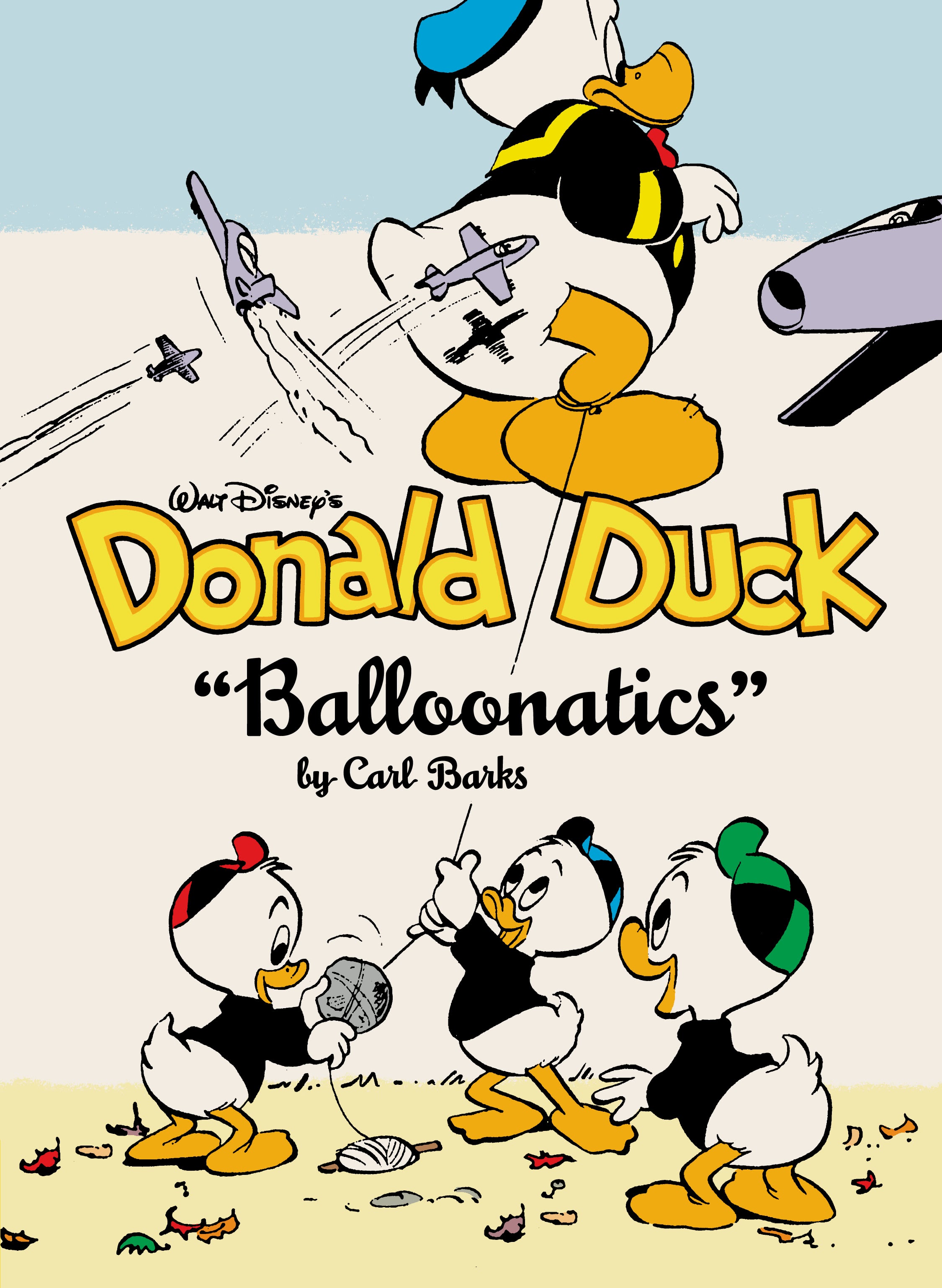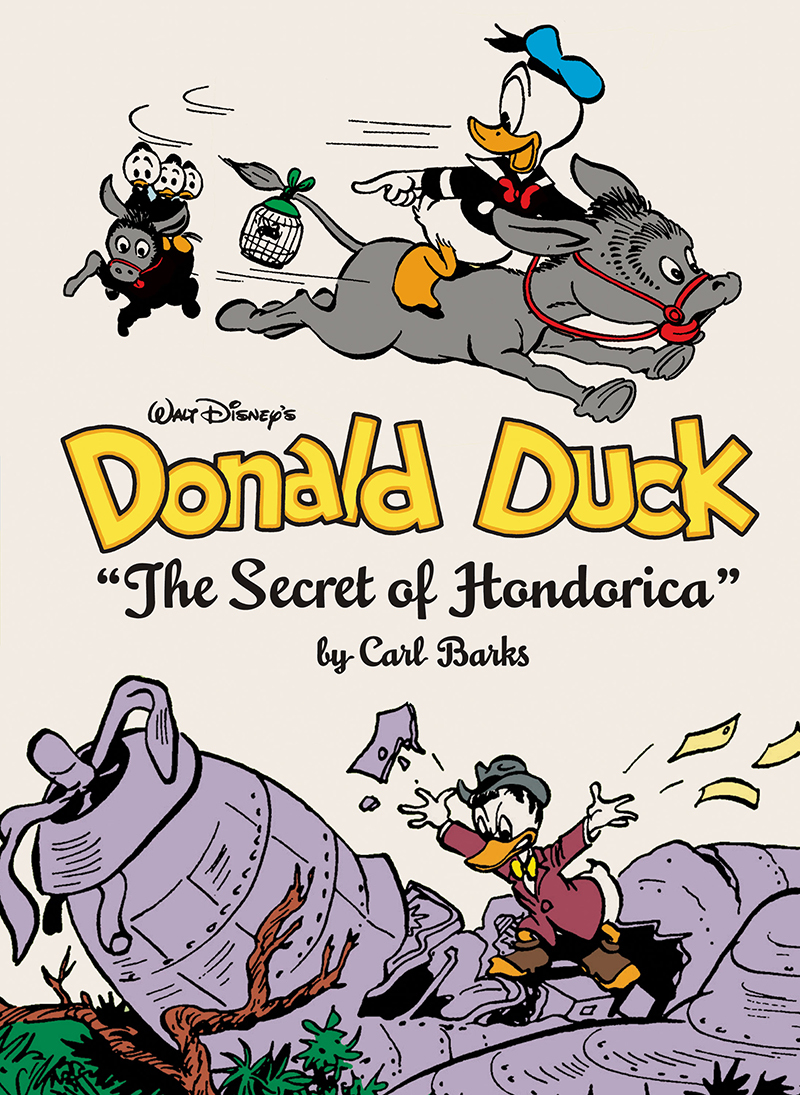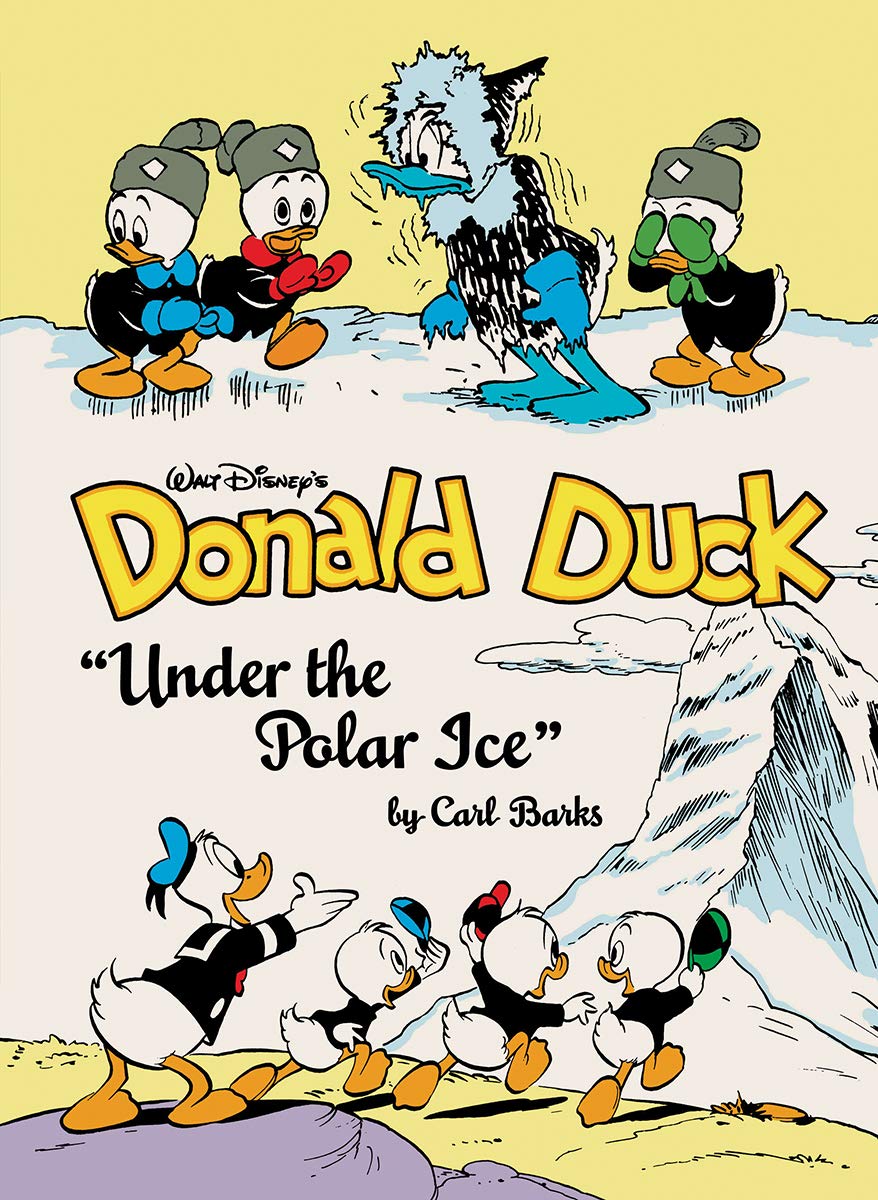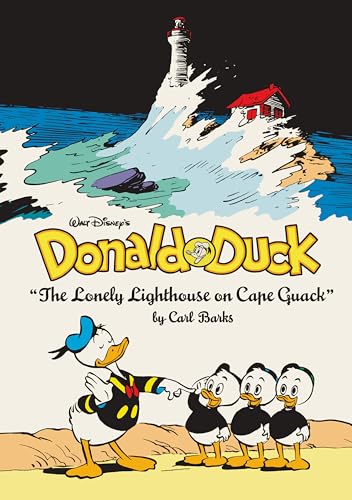
Part of Series
Carl Barks' stories of the Junior Woodchucks starring Huey, Dewey, and Louie—written and penciled by Barks with finishes by internationally acclaimed Duck artist Daan Jippes—debut in this volume! Other stories include: When Gyro Gearloose invents a ten-story-tall Donald Duck balloon—bigger than anything ever seen at the Macy's Parade! — Donald decides to take a ride. But Gyro’s "new balloon gas" is stronger than he thought it was, and Donald finds himself out of control, sailing higher and higher, until… Then, Huey, Dewey, and Louie try to help a "fraidy falcon" overcome his fear of flying by getting Donald to help, but Donald has his own ideas… Next, somebody's blowing up experimental rockets at the launchpad, and the nephews are on the trail of the spy, but Donald’s sure of who it's not—until he finds himself on board the next rocket to blast-off… 180 pages of story and art, each meticulously restored and newly colored. Insightful story notes by an international panel of Barks experts.
Authors

Carl Barks (March 27, 1901 – August 25, 2000) was an American Disney Studio illustrator and comic book creator, who invented Duckburg and many of its inhabitants, such as Scrooge McDuck (1947), Gladstone Gander (1948), the Beagle Boys (1951), The Junior Woodchucks (1951), Gyro Gearloose (1952), Cornelius Coot (1952), Flintheart Glomgold (1956), John D. Rockerduck (1961) and Magica De Spell (1961). The quality of his scripts and drawings earned him the nicknames "The Duck Man" and "The Good Duck Artist". People who work for Disney generally do so in relative anonymity; the stories only carry Walt Disney's name and (sometimes) a short identification number. Prior to 1960, the creator of these stories remained a mystery to his readers. However, many readers recognized Barks' work and drawing style, and began to call him the Good Duck Artist, a label which stuck even after his true identity was discovered by John and Bill Spicer in 1959. After Barks received a 1960 visit from Bill and John Spicer and Ron Leonard, he was no longer anonymous, as his name soon became known to his readers. Writer-artist Will Eisner called him "the Hans Christian Andersen of comic books." In 1987, Barks was one of the three inaugural inductees of the Will Eisner Comic Book Hall of Fame. (From wikipedia)


